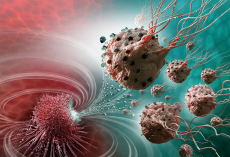

Microbiology is the study of organisms that cannot be seen through the naked eye. However, microbiology is not dependent on just size alone. There are various types of microorganisms, some of which you are most likely familiar. These are: Bacteria, Protozoa, Fungi and Archaea. They all range in size, the largest bacteria can be seen through the naked eye. Microbial carbon equals that of plant carbon and microbial nitrogen and phosphorus is above 10 times larger than that of plant biomass. We can therefore establish that microbes are in abundance and hold great significance in global biomass.
So why are there so many microorganisms?
Many have a very short life cycle and rapid growth rate means they are everywhere. Rapid growth means a high chance of speciation through random mutation and there is a large amount of exchange of genetic material through lateral gene transfer.
Microbial growth requires specific conditions. You may have seen dan experiment carried out where microbes are grown on agar plates, these agar plates contain all the nutrients and growth requirements needed for the microbes to reproduce. These mediums may contain substances such as glucose, yeast, peptones, and Monopotassium phosphate. There are two types of media; selective and differential. Selective media allows the growth of only some types of organisms, it will contain ingredients that inhibit the growth of some organisms whilst allowing others to grow. Differential media contains compounds that allow groups of microorganisms to be identified based on the growth and appearance.
Bacterial Growth
Bacteria grow asexually through either binary fission or budding. This means that cells double in size, cell contents are replicated and then the cell splits into two. Growth can be visualised experimentally through a range of methods. We can measure growth through haemocytometry, turbidimetry (measuring turgidity of solution) or through dilution plating. Plating bacteria must require dilution as we need to be able to reduce the number of bacteria by a known dilution factor in order to be able to see the bacteria and thus count them.
There is a problem with identifying microorganisms however. Limited morphological (structure and function) diversity means that it is difficult to distinguish different microbes as they appear similar through a microscope.
Bacteria are the simplest form of life known. Older scientific research put Archaea and Bacteria together under one domain, however later research found significant differences between the two which meant they should be separated. Research showed that Archaea actually had more similarities to eukaryotes than first originally thought. For example archaea have similar histones (a type of protein) to eukaryotes. Archaea also have significantly different RNA polymerase and flagella to bacteria. Bacteria occur in various shapes, they can be spiralled, spherical or rod shaped, when looking through a microscope it is good to look out for these visual features to identify different organisms.
Often when we think bacteria, we do think of the bad kind, the bacteria that make us ill, or contaminate our food. However there are many useful bacteria, they are widely used in various industries.
Image Credits:
http://images.iop.org/objects/phw/news/20/8/20/PW-2016-08-23-Dume-magnetic.jpg

0 Comment:
Be the first one to comment on this article.